The roof will be one of the most dominant features of your new house, representing 20-30 per cent of the exterior visible area of your house. Its finish therefore needs careful consideration at the preparation phase.
Among the factors to consider that help you select will be the cost, the protection of the tiles, the green qualifications associated with producing and shipping your product and, for renovation projects or integrates in locations of exceptional appeal, historic stability. For hands-on self-builders, the level of knowledge needed to lay the material may likewise be an element.
Aspects determining the roof covering include the design of your home, your architect as well as your regional coordinators, as selecting something in the vernacular may well get your plans rubber stamped. Slate, clay and concrete tiles are the main tile options in the UK, with slate holding sway in areas where there is a local supply. However nowadays there is a lot of option out there, with everything from handmade clay tiles to mass-produced concrete and imported slate.
Generally the roofing structure need to cost around 10 percent of your entire build cost (depending upon complexity) and its covering about five per cent, although this will vary depending upon the products.
Interlocking tiles

Clay tiles.
Clay tiles have a long lifespan– a recent refurbishment of Boston Guild Hall in Lincolnshire found a few of the tiles gone back to the 14th century. The weather condition in the UK can take a heavy toll on clay tiles, as our winter seasons involve consistent damp, freezing and thawing cycles. Tiles offered here, especially imported ones, have to satisfy the UK’s frost requirements.
Clay tiles also have an excellent pre-owned market, making them fairly sustainable. Many clay tiles are industrial, however hand-made and hand-finished alternatives are also available. Keymer, Aldershaw and MST Roofing all produce handmade tiles, although not all are made in the UK– consult individual companies if this is important for you.
Generally, lots of manufacturers made tiles with local clay, and this triggered local colourways and sizes. Niche-market manufacturers frequently reproduce these special or imperial tiles, which are perfect for sanctuary or for repair works to listed homes. Babylon Tile Functions, for instance, produces Kent Pegs.
Interlocking systems are weathertight and simple to lay, and numerous contemporary tiles replicate the look of traditional slate, with 2 interlocking edges on program and two riven edges.
Your option of tiles will also be affected by the pitch and roofing structure, so guarantee that the roofing can take the weight of your tiles– your designer or a structural engineer can work this out, or speak to your tile business. Obviously, the roof needs to also adhere to Structure Laws. The pitch of the roofing system and type of tile utilized will likewise impact how lots of and in what setup the tiles should be nailed. A high pitch or detail like a catslide will be on program, so it deserves buying quality tiles
Great for curves and intricate details, clay tiles come in a range of colours and shapes, with unique tiles for valleys, ridges and gulleys. Period constructs or renovations can benefit from impressive detailing such as remarkable ridge tiles/finials, while tile shapes, such as fish tail and bull nose, are utilized to produce patterns.
Using interlocking tiles lowers the need for overlapping needed by some standard tiles, in particular slate. It lowers the variety of tiles needed per square metre and reduces the weight of the roofing, although some interlocking tiles are heavier than their conventional counterparts.
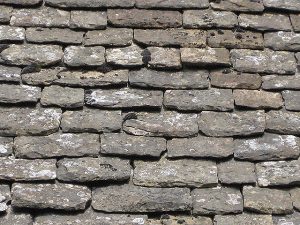
Stone
Stone differs in density around the nation, from the relatively thin Yorkshire stone to the thicker and less consistent stone slates typically used in the Cotswolds.
Sedimentary stone divides naturally, like slate, into thin sheets that make great roof material, with the thicker tiles making a much heavier, stronger structure. They need a steeper pitch, usually a minimum of 45 degrees, and possibly an expert fitter. Stone is laid in reducing courses, with larger tiles at the bottom and smaller ones at the top. As with slate, curves are tough to achieve, and ridge tiles can be made from clay, metal or stone. UK-produced or salvaged stone tiles can be pricey, however might be defined by preparing or chosen on particular high-spec builds.
Stone is rather a pricey material to roof your house with, and it will probably only be worth while in areas where the stone remains in the vernacular, such as the Pennines or Cotswolds.
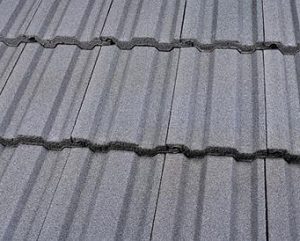
Concrete
A major player in roof materials, the advantage of concrete tiles is the vast variety available– numerous of which interlock, offering enhanced waterproofing, safe and secure repairing and shallower roofing system pitches– and excellent costs. A wide variety of colours, textures and surfaces is readily available, from the thick double-roman tile that dominates new-build estates to all sorts of heritage-look tiles matching conventional tiles at a smaller sized cost. The downside of these tiles is that they don’t constantly weather in the same method as the original items do, and can have a shorter life-expectancy, depending upon the item. The large variety of designs implies that concrete tiles are fairly versatile in achieving more hard shapes and unique tiles are quickly offered for ridges and gulleys as well as for curves.
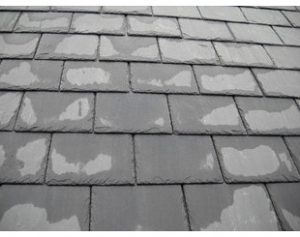
Slate
Slate supplies a clever and yet traditional roof product, normally grey, but is likewise offered in colours, from purple to green. Imported tiles come from Canada, China and Spain, and contemporary versions are readily available, consisting of composite look-alike versions and recycled slate, such as Sandtoft’s BritSlate variety, which comprises 80 per cent slate, crushed and reformed. Composite and concrete versions are frequently interlocking, reducing the requirement for overlapping.
A numerous supply of this quickly splittable stone in the UK guaranteed its supremacy, particularly in Wales, the north of England and Cornwall. Slates need substantial overlapping on several sides to make sure water-tightness, and the tiles must be laid on battens over an underlay. A slate roofing system requires a pitch of 30 degrees, and need to be finished with clay or metal at the ridges and junctions. Curves are harder to achieve with slate, and are expensive also– basic roof shapes are typically the most cost-effective.
The finest of the rest
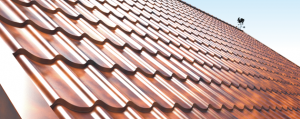
Metal
A modern-day series of lightweight steel tiles, pushed to appear like standard tiles, is available, but more typically in Europe. The benefit of these systems is that they are light-weight and can be laid on low pitches. Roofing membranes can likewise be coloured too look like metal, for a hi-tech take on a traditional appearance.
Metal roofing is lasting and really adaptable for curves and complex shapes, however they do have disadvantages: environmental concerns in mining (for copper) and basic production; prohibitive costs of numerous metals; and their appeal to thieves. Run-off from copper and lead run-off can also be a cause for issue.
You may think of metal roofing is something modern-day, however copper has been the roof material of choice for centuries on domes and complex functions, while the Elizabethan gentry was well-used to taking the air on flat roofings covered in lead. These days there are numerous more metals readily available, and options consist of aluminium and zinc, which can be laid on reasonably shallow pitches, normally on boards or stiff insulation. The repairing and joints differ according to the metal and fixing-system used.
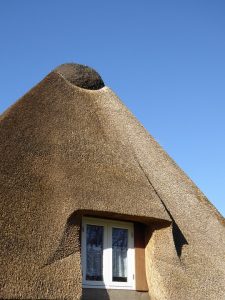
Thatch
Thatch gives a fantastic organic shape which is best for curves, and insulates well. It’s a standard and sustainable material that ought to be motivated, and fire issues– which have actually avoided it appearing on lots of new builds– are rather simple to overcome.
In the UK thatch tends to be made from either long straw or the less typical, however longer long lasting, water reed, though there is currently a shortage of great thatching material, in addition to thatchers.
It needs a steep pitch and has a deep overhang, rarely requiring a rain gutter.
Thatch has a definite life-span, typically lasting in between 15-25 years, with checks and possible upkeep required every few years. The drier the environment the longer lasting the thatch.
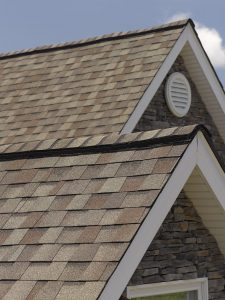
Landmark Weathered Wood
Shingles
Uncommon in most of the UK, they can be left unattended to weather to a beautiful silver, or, additionally, they can be treated for longer life and to protect a few of the initial colour. If you wish to get the longest life from your choice, go with premium shingles.
shingles, and the more rustic-looking shakes, are a sustainable along with lasting roofing product, with Western Red Cedar a normal wood.
No matter what type of roofing you choose, please make sure that use an accredited roofing company.